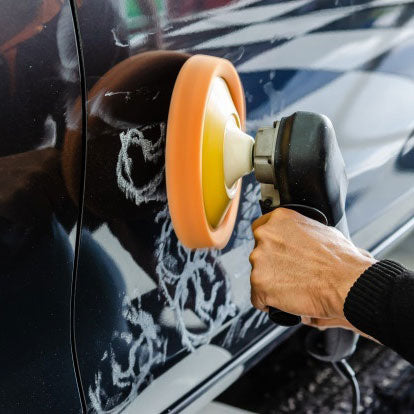Skin penetration procedures—such as body piercing, tattooing, cosmetic tattooing, micro dermal implants, and certain beauty treatments—are popular all across the world and while these procedures can be a powerful form of self-expression and aesthetic enhancement, they come with inherent risks if not performed under strict hygiene and infection control protocols.
The skin is our body's first line of defence against pathogens and when that barrier is breached, there’s a risk of introducing infectious agents directly into the bloodstream or surrounding tissues.
I want to shed some light and explores the most common infection risks associated with skin penetration procedures, focusing on bloodborne pathogens, cross-contamination, and poor hygiene practices—three core areas that pose the greatest danger to practitioner and client safety.

Understanding the Nature of Skin Penetration Procedures
Skin penetration procedures typically involve the use of sharp instruments such as needles, blades, or other piercing devices. These tools come into direct contact with blood, tissue, or bodily fluids, meaning there’s a real risk of transmitting infectious agents
Because these procedures involve contact with blood, bodily fluids, and tissue, there's a high risk of transmitting infectious diseases without proper infection control.
The risk is not just limited to clients; operators themselves may be exposed through accidental needlestick injuries or poor handling of contaminated equipment.
The procedures vary in technique and purpose. For example:
- Tattooing involves inserting pigment into the dermis using needles.
- Cosmetic tattooing (or micropigmentation) is a refined version of tattooing often used for enhancing features like eyebrows, lips, or the scalp.
- Body piercing creates a channel through the skin or cartilage for jewellery.
- Micro needling stimulates collagen production using fine needles and is often used in skin rejuvenation treatments.
- Scarification intentionally marks the skin through cutting or branding for aesthetic or cultural reasons.
Each of these services requires a clean and controlled environment, sterile equipment, and trained professionals who understand the risks involved and how to mitigate them. Furthermore, all skin penetration procedures must comply with local health regulations, which generally mandate infection control training, proper disposal of sharps, the use of personal protective equipment (PPE), and appropriate hand hygiene.
Bloodborne Pathogens: Silent But Dangerous

What Are Bloodborne Pathogens?
Bloodborne pathogens (BBPs) are infectious microorganisms present in blood and certain bodily fluids that can cause disease in humans. The most concerning BBPs in the context of skin penetration procedures include:
Hepatitis B Virus (HBV)
Hepatitis B is a highly infectious virus that affects the liver. It spreads through contact with infected blood or bodily fluids, making it a major concern in skin penetration procedures. The virus can survive on surfaces for up to 7 days and still cause infection, which highlights the importance of sterilisation and surface disinfection. Symptoms may include fatigue, jaundice, nausea, and liver damage. Vaccination is available and recommended for practitioners.
Hepatitis C Virus (HCV)
Hepatitis C also affects the liver and is spread primarily through blood-to-blood contact. It often goes undetected because symptoms may take years to appear, but it can lead to chronic liver disease, cirrhosis, and liver cancer. There is no vaccine, making prevention through strict infection control essential in any skin penetration setting.
Human Immunodeficiency Virus (HIV)
HIV attacks the immune system and can lead to acquired immunodeficiency syndrome (AIDS) if left untreated. It is transmitted through infected blood or other bodily fluids, including via contaminated needles. While modern treatments allow people with HIV to live long and healthy lives, it remains a serious lifelong condition. The virus does not survive long outside the body, but sterile technique is still critical to prevent occupational exposure.
Syphilis
Syphilis is a bacterial infection caused by Treponema pallidum, transmitted primarily through sexual contact, but also through blood exposure in rare cases. In skin penetration procedures, the risk arises from contact with open sores or contaminated instruments. Early stages may present as sores or rashes, and if untreated, it can progress to serious organ damage.
Tetanus
Tetanus is caused by Clostridium tetani, a bacterium found in soil and dust that produces spores. These spores can enter the body through puncture wounds or cuts and release toxins that affect the nervous system, causing severe muscle stiffness and spasms. Although not bloodborne, tetanus poses a risk in skin penetration procedures if sterile technique isn’t used or aftercare is poor. Vaccination is the best prevention.
These viruses can survive for extended periods outside the body on contaminated tools, work surfaces, or gloves. In many cases, clients or workers may be asymptomatic carriers, further elevating the risk of unintentional exposure.
How Are Blood Born Pathogens Transmitted in Skin Penetration?
Bloodborne pathogens can be transmitted in a variety of ways during skin penetration procedures if proper infection control measures are not followed. Risks include the reuse of non-sterile needles, failure to properly disinfect or dispose of tools contaminated with blood, and operators continuing work after experiencing needlestick injuries without taking appropriate action. Additionally, using contaminated gloves between clients and neglecting to clean and disinfect work surfaces or instruments between procedures can also lead to the spread of dangerous pathogens. These practices significantly increase the likelihood of transmitting infections such as hepatitis B, hepatitis C, and HIV.
The Consequences of Exposure
Exposure to Blood Born Pathogens can have serious long-term health consequences. Hepatitis B and C can lead to chronic liver disease, liver cancer, and even death. HIV remains a life-altering condition, even with treatment. A single lapse in infection control can put both clients and operators at risk.
Cross-Contamination: The other invisible culprit

What Is Cross-Contamination?
Cross-contamination refers to the unintentional transfer of harmful microorganisms from one surface, person, or object to another. In skin penetration settings, this often occurs without the operator even realizing it.
Common Scenarios of Cross-Contamination
- Using unwashed hands or gloves to touch sterile equipment.
- Reaching into drawers or containers with contaminated gloves.
- Placing sterile instruments on unclean surfaces.
- Failing to clean reusable tools thoroughly between clients.
- Improper disposal of sharps or waste, leading to secondary contact.
- Shared ink or pigment pots during tattoo or cosmetic tattoo procedures.
- Not sanitizing environmental surfaces, clip cords, trays, or chair upholstery between clients.
Preventing Cross-Contamination
- Use single-use, pre-sterilized needles and disposables wherever possible.
- Follow strict hand hygiene protocols before and after glove use.
- Change gloves between every stage of the procedure or task.
- Cover high-touch areas (e.g. light switches, clip cords) with disposable barrier film and replace it between clients.
- Use separate tools and equipment for each client and sterilise tools and discard disposables after use.
- Avoid touching non-essential items (phones, pens, door handles) during procedures.
Even minor lapses can compromise the sterility of the environment and dramatically increase infection risk.
Poor Hygiene Practices: A Breeding Ground for Infections

Defining Poor Hygiene in This Context
Poor hygiene encompasses inadequate cleaning, sanitation, disinfection, and sterilization practices that fail to eliminate or reduce microbial contamination. In the context of skin penetration, this also extends to personal hygiene and studio cleanliness.
Key Examples
- Improper hand washing or not washing hands at all before and after procedures.
- Lack of personal protective equipment (PPE) such as gloves, masks, or aprons.
- Unclean work environments, such as dusty shelves, cluttered workstations, or presence of pets in the studio.
- Failing to sterilize reusable instruments using an approved autoclave.
- Not testing or servicing autoclave equipment regularly for sterility assurance.
- Not using medical-grade disinfectants on surfaces and tools.
- Inadequate aftercare guidance given to client’s post-procedure.
The Impact of Poor Hygiene
When hygiene standards are neglected in skin penetration procedures, the consequences can be serious for both clients and operators. Clients may develop localized infections, such as redness, swelling, or pus at the treatment site, and there is an increased risk of more severe systemic infections, including sepsis. Poor hygiene also allows pathogens to survive and accumulate in the studio environment, creating ongoing risks of cross-contamination. Operators not only face potential occupational exposure to harmful microorganisms but also risk damaging their professional reputation. In some cases, failure to maintain proper hygiene can lead to legal consequences under local public health regulations.
Real-Life Examples and Outbreaks

Numerous outbreaks have been traced back to poor infection control in the skin penetration industry:
- Sydney, 2018: A body piercing salon was linked to multiple hepatitis C infections due to improper sterilization.
- Brisbane, 2020: A tattoo shop was fined for not using a functioning autoclave or providing adequate handwashing facilities.
- International example: In the U.S., the CDC has investigated multiple outbreaks of Mycobacterium chelone linked to tattoo ink diluted with non-sterile water.
These real-world incidents highlight the consequences of complacency.
Infection Control Guidelines in Australia

Australian states and territories have clear public health regulations governing skin penetration procedures to protect both clients and practitioners. While the specific legislation may vary slightly between jurisdictions, there are several consistent requirements. These include the use of single-use, sterile equipment wherever possible, regular maintenance and validation of sterilisation equipment such as autoclaves, and the provision of adequate handwashing facilities and personal protective equipment (PPE).
Studios must also implement documented cleaning and disinfection protocols, follow strict waste disposal procedures for sharps and contaminated materials, and ensure that all operators are trained in infection control and the management of bloodborne pathogens. Compliance with these regulations is mandatory and is actively enforced through routine inspections, with non-compliance resulting in penalties such as fines or, in serious cases, closure orders.
The Role of Training and Knowledge

Operators must undergo formal training in infection control principles, such as:
- Standard and additional precautions
- Chain of infection and how to break it
- Sharps safety
- Correct hand hygiene
- Understanding the use of PPE
- Instrument cleaning, disinfection, and sterilisation
- Waste segregation and disposal
In Australia, these are often embedded in nationally accredited courses such as (click link):
- HLTINF005 – Maintain infection prevention for skin penetration procedures
- SHBBINF002- Maintain infection control standards
Clients should also be educated on what to look for in a safe studio and feel empowered to ask about sterilization practices and operator training.
How to Minimize Infection Risk: Best Practices

To create a safe environment for both clients and staff, the following best practices should be adopted and strictly followed:
For Operators:
- Wash hands using proper technique before and after every procedure.
- Wear gloves and change them between each new task or client.
- Use single-use equipment where possible; otherwise, sterilize thoroughly.
- Clean and disinfect all surfaces between each client.
- Keep the environment clutter-free and easy to clean.
- Document and validate all sterilization cycles.
- Dispose of sharps in puncture-proof containers.
- Keep current with infection control training and guidelines.
For Clients:
- Choose licensed and reputable studios.
- Look for clean, well-maintained environments.
- Observe whether gloves are changed and equipment is opened from sterile packaging.
- Follow aftercare instructions carefully.
- Report any signs of infection early.
Infection risks in skin penetration procedures are real, but entirely preventable. Bloodborne pathogens, cross-contamination, and poor hygiene are the top culprits behind most complications and outbreaks in this field. Fortunately, with strict protocols, ongoing education, and professional accountability, these risks can be minimized or eliminated entirely.
Whether you’re a practitioner or a client, understanding these dangers empowers you to make safer choices. For professionals, adherence to infection control isn’t just about legal compliance—it’s a sign of respect for your craft, your clients, and your community.
Want to Learn More?
If you're considering a career in skin penetration or want to improve your infection control knowledge, we have courses and additional blogs you could read to help you gain a full understanding of what’s available.
Because when it comes to skin penetration, there’s no room for shortcuts—only safety, skill, and professionalism.
- Jaz Anna



